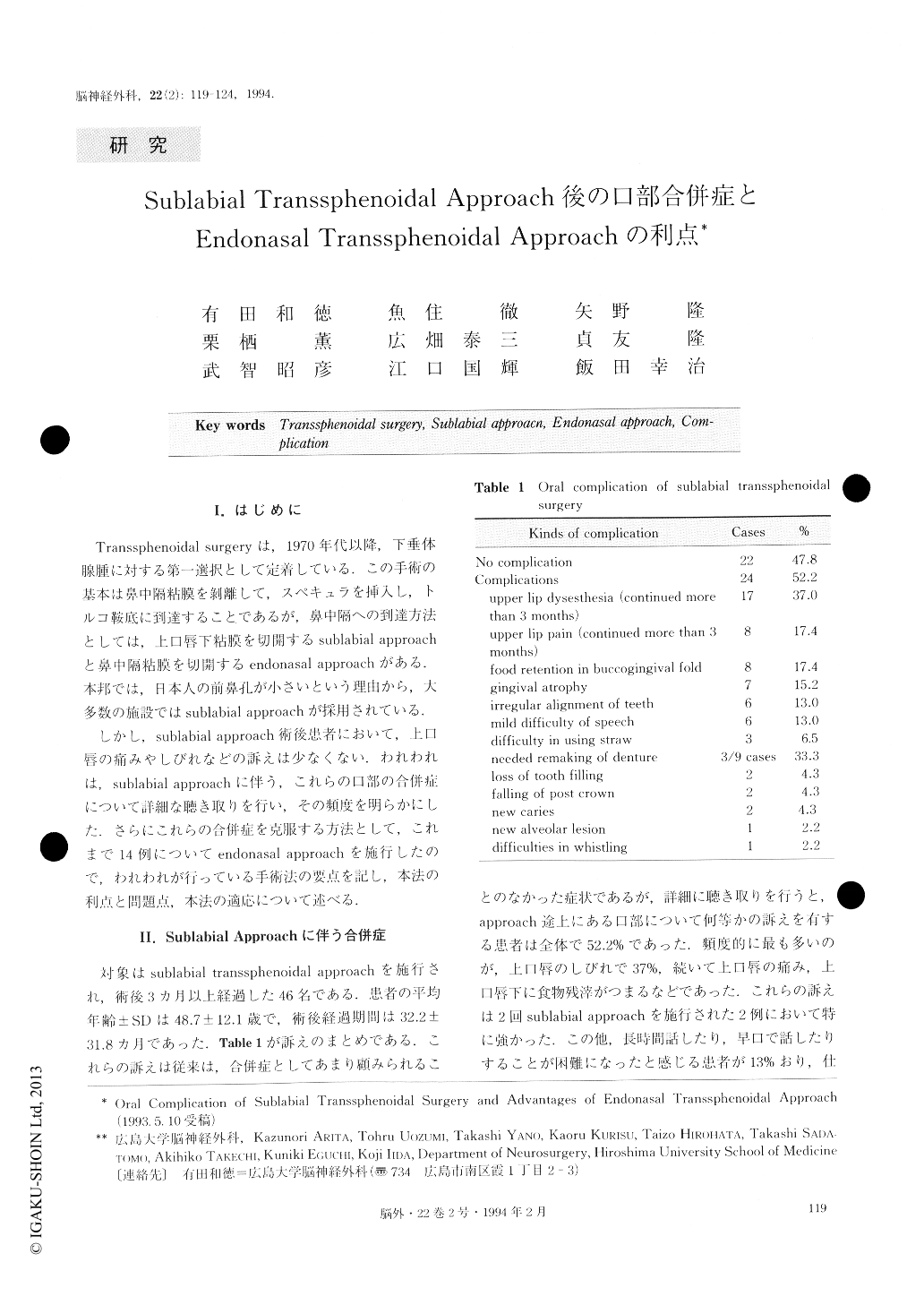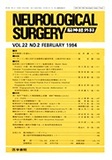Japanese
English
- 有料閲覧
- Abstract 文献概要
- 1ページ目 Look Inside
I.はじめに
Transsphenoidal surgeryは,1970年代以降,下垂体腺腫に対する第一選択として定着している.この手術の基本は鼻中隔粘膜を剥離して,スペキュラを挿人し,トルコ鞍底に到達することであるが,鼻中隔への到達方法としては,上口唇下粘膜を切開するsublabial approachと鼻中隔粘膜を切開するendonasal approachがある.本邦では,日本人の前鼻孔が小さいという理由から,大多数の施設ではsublabjal approachが採用されている.
しかし,sublabial approach術後患者において,上口唇の痛みやしびれなどの訴えは少なくない.われわれは,sublabial approachに伴う,これらの口部の合併症について詳細な聴き取りを行い,その頻度を明らかにした.さらにこれらの合併症を克服する方法として,これまで14例についてendonasal approachを施行したので,われわれが行っている手術法の要点を記し,本法の利点と問題点,本法の適応について述べる.
In order to know the exact incidence of oral com-plications due to the sublabial transsphenoidal approach, the authors meticulously heard the corn-plaints of 46 patients, who had undergone the approach more than 3 months before.
The incidence of the patients who had one or more complaints concerning the oral region was 52.2%. Dysesthesia of the upper lip was most frequent (37%), followed by upper lip pain (17.4%). These complaints were more marked in two patients who had undergone operations using the sublahial approach twice. Among the nine patients with dentures, the dentures had to be remade in three patients because of gigival atrophy several months after the use of the sublabial approach. With a view to overcoming these complications, the authors adapted the endonasal transsphenoidal appro-ach in 13 patients. There was no inconvenience during surgery while this approach was being used, and there were no postoperative oral complications. Among three patients using dentures, there were none who needed remodeling of their dentures. In nine patients, the ten-sion reducing incision was made in the bottom of the columella, which caused no cosmetic problem. Further-more, the time consumed for approaching the sphenoid sinus was less than that required when using the subla-bial approach.
In conclusion, the following type of patient is be-lieved to be an appropriate candidate for endonasal approach. A patient who has a relatively smaller sellarlesion and 1) An acromegalic patient whose nostril is relatively large, 2) An elderly patient using dentures, 3) A patient who has undergone previous transsphenoidal surgery, or 4) A patient whose columellar crease is hidden.
This approach can be applied even with the Japanese population, in whom it has seldom been applied, be-cause of the supposition that their nostrils are too nar-row for the use of this approach.

Copyright © 1994, Igaku-Shoin Ltd. All rights reserved.


